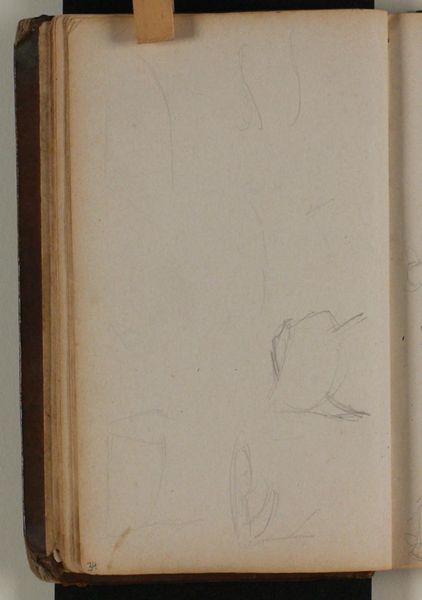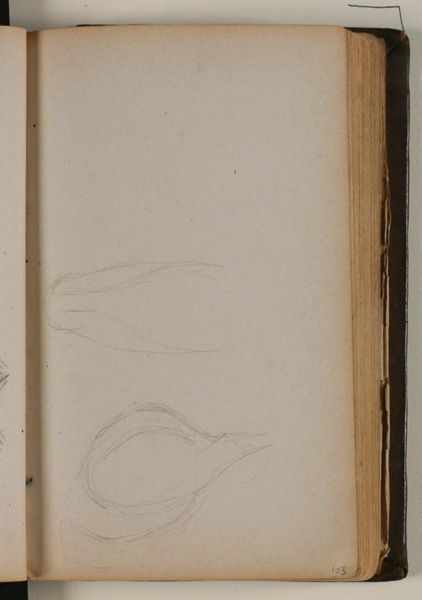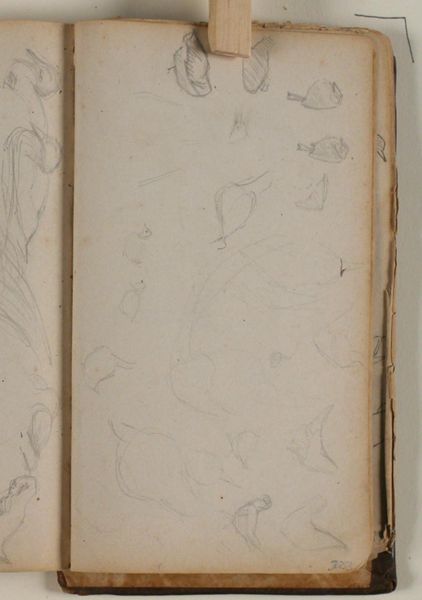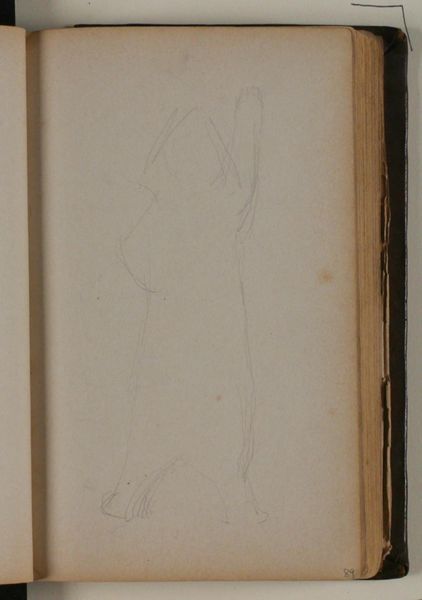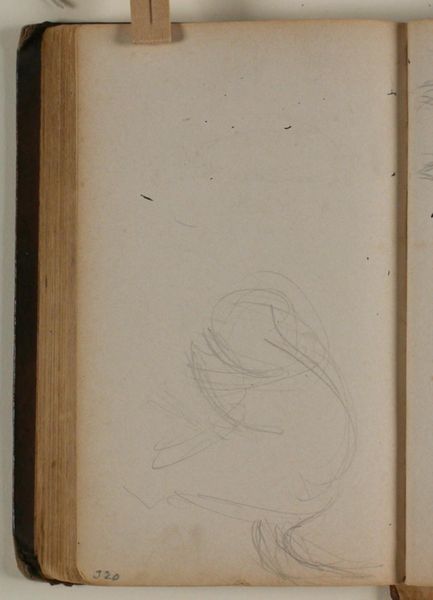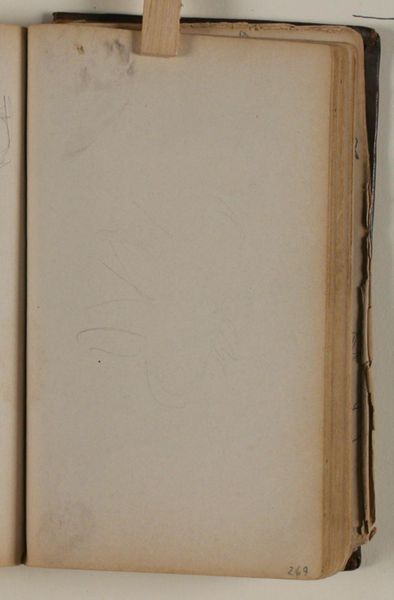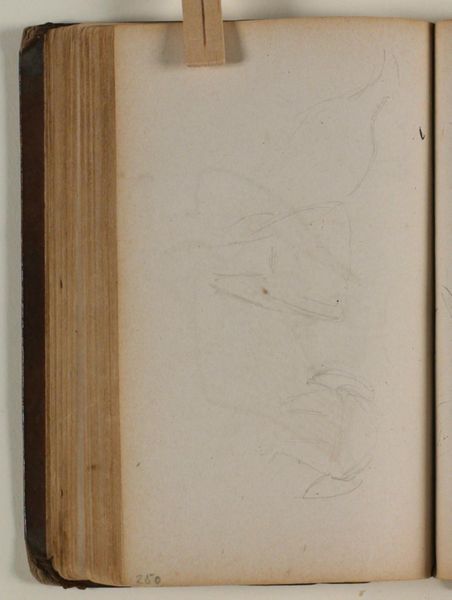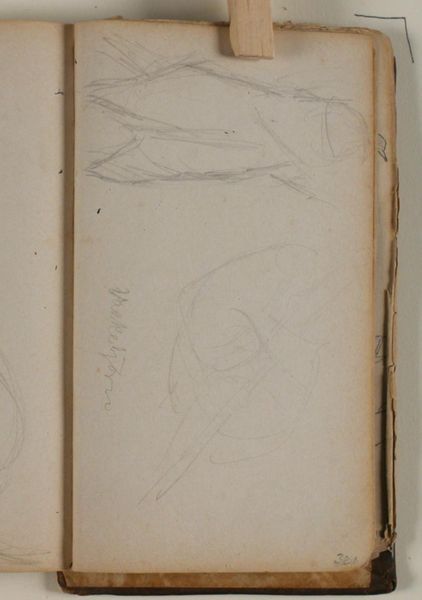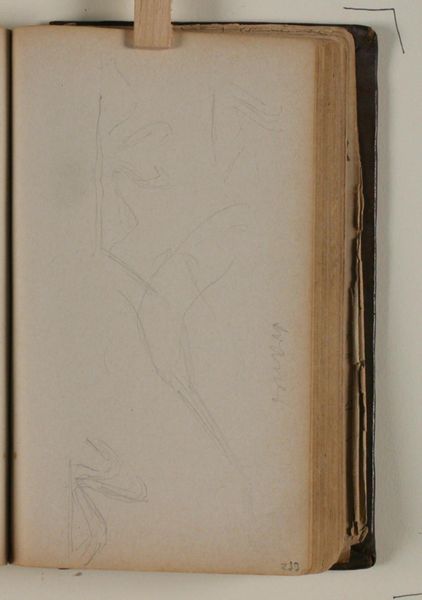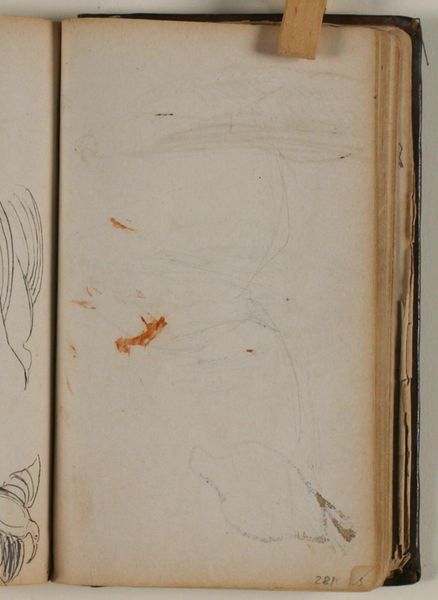
drawing, paper, pencil
#
portrait
#
drawing
#
figuration
#
paper
#
coloured pencil
#
pencil
#
line
Curator: This is Niels Larsen Stevns' "Studier af Ørn," or "Studies of Eagles," dating sometime between 1864 and 1941. It's currently held here at the SMK, the Statens Museum for Kunst. Editor: It has the air of a preparatory sketch, doesn't it? Quick lines, almost ghostly. The scale suggests it's part of a larger notebook or collection. The aged paper also speaks to the age of the work, emphasizing its materiality. Curator: Absolutely. And that's where it gets interesting. We see pencil, possibly some colored pencil, on paper. The medium here reflects its function. As a study, the piece serves a practical purpose in the broader production process of Larsen Stevns. Were these eagles ever realized on a grander scale? Editor: That’s the compelling question! These eagles, though fleeting in execution, gain weight historically when we consider Larsen Stevns’ place within the Danish art world. What narratives about nature were he building into his visual rhetoric at this time? Who and how influenced the design and depiction choices on display here, even if just in study? Curator: Thinking about production too, how readily available was colored pencil? It could say something about access to materials and the development of Stevns' practice, which evolved within and reflected a network of creative laborers and manufacturing. Editor: Agreed. The lack of sharp detail allows viewers of subsequent generations space to read new meaning into the sketch and place it within the trajectory of Larsen Stevns' reputation in relation to its display, sale, and so on. It reminds us to see the art, too, as existing within institutions, a socio-political creature subject to shifting readings over time. Curator: In the end, both material and historical elements work together to underscore that these rapid impressions allow us intimate access into an artist’s broader creative and economic enterprise. Editor: Precisely. By drawing these studies out from relative obscurity, we also celebrate the art institution's dedication to sharing all the parts that together create the full image of art history.
Comments
No comments
Be the first to comment and join the conversation on the ultimate creative platform.
